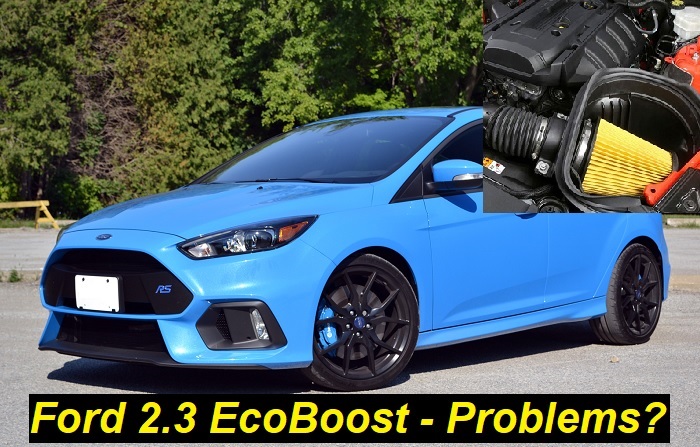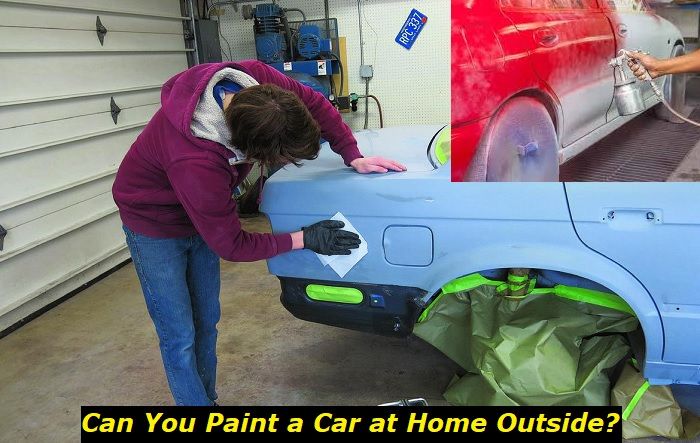The Ford EcoBoost engine series is very popular among Ford drivers. In some models, you basically have no other choice and you just buy a car with the turbocharged gasoline EcoBoost engine. Frankly speaking, these engines aren't bad at all. Compared with TSI or TFSI in Volkswagen and Audi cars, these turbocharged engines made by Ford are actually good.
Today, we'll be speaking about a very widespread and popular 2.3 EcoBoost engine. It's not only used in a Focus RS, different modifications of this engine are used in numerous other Ford models (and not only Ford). Our main goal is to talk about problems and give you some recommendations to avoid these common problems with the 2.3 EcoBoost engine.

Key features and my opinion about the engine
- Production years:2001-2011
- Average lifespan of 2.3L Duratec:230,000-260,000 miles
- Fuel supply type:port injection
- Power range:153-178 hp
- Fuel efficiency:bad
- Engine block material:aluminum
- Engine reliability score:high
- The most common problems:oil consumption, chain stretching, phaser problems, no lifters.
Which cars have been equipped with the 2.3 EcoBoost engine?
First of all, we should say that there are different series of this engine. And yes, they have the same construction and basically the same problems. But the engine in a Focus RS will differ dramatically from the engine in a Bronco or in a Ranger, for example. Just because they have completely different tasks.
Ford achieved this difference by specifically tuning each model of the 2.3 EcoBoost engine according to their needs.
Here are the models that were or have been equipped with the 2.3L EcoBoost:
- Ford Explorer
- Ford Ranger
- Ford Focus RS (ST for Europe)
- Ford Bronco
- Ford Mustang
- Lincoln MKC
- Lincoln Corsair
Also, the highly modified 2.3-liter engine was used in special cars such as Zenos and VUHL projects.
What we can say about using this engine is that it brings joy. It's really fun to drive even if it powers the huge Explorer or a truck like the Ranger. It doesn't mean it's the best choice for cars like this or for a Mustang, no! But it's not as bad as you may be thinking about it.
Although we think that this engine best suits the Focus RS, it is not bad for all other vehicles it has been installed in.
Any construction features to mention?
The 2.3-liter EcoBoost engine is a 4-cylinder gasoline engine with a lot of versions having 270 to 405 horsepower and 305 to 369 lb-ft of torque. The engine has one EcoBoost turbocharger, aluminum block, and chain-driven timing system. It's just a simple engine with nothing to worry about if you have a low-mileage unit in your hands.
The fuel supply system is not very simple and problem-free. It's hard to maintain and very expensive to repair. Also, these engines don't like overheating due to their construction. They need proper oiling as any other modern engines and they can fail just because you don't pay a lot of attention to the quality of maintenance.
What's the lifespan of 2.3 EcoBoost engines?
These engines can go a lot of miles compared to other units with similar specs. We may think of 200,000 miles in most vehicles and about 150,000 miles in a Focus RS if you aren't going to use it in professional racing. Racing engines are usually tuned and modified. Even if not, they still experience heavy loads and get broken much faster than engines in usual vehicles.
Here are some of the most important features that define the longevity of the 2.3L EcoBoost engine:
- the oil you use for this engine should only be Ford's original oil, otherwise, the lifespan can be reduced a lot;
- overrevving the engine can lead to problems even though it's made for sporty driving, you shouldn't rev up for too long;
- revving up too much can cause overheating and problems with the head, valves, and other important parts;
- the quality of fuel is super important because the fuel system may fail and lead to extremely expensive repair;
- you should maintain the engine regularly and even more often than stated by the manufacturer;
- the model of your car is also important - the longevity of the 2.3 EcoBoost in a lighter car is going to be better than in heavier SUVs or trucks.
You can see that a lot of factors decide whether you'll be able to drive your car for many years or not. Unfortunately, these factors also lead to the most common problems with your EcoBoost engine. It means that if you just follow some maintenance advice given by the manufacturer, you can prolong the life of your engine and reduce the amount of money you'll need to spend to service the engine in the future.
What are the common problems with the EcoBoost engine?
We can't say that the engine is problem-free. We see a lot of minor issues that are important to understand if you are going to buy a car with this engine or you own a vehicle with high mileage (over 100,000 miles).
It's not only about obvious minor issues that are common for nearly all Ford engines. We can also see some of the exclusive problems that are common for 2.3-liter EcoBoost units only. And sometimes you can't even avoid them because they are caused by the construction, not by the way you use the engine.
Here are some of the most common issues:
- Head gasket problems. No, the head gasket doesn't usually leak, though it can go bad after even a short and minor overheating. Also, some vehicles have poor-quality head gaskets that will leak after 100,000 miles or something.
- Fuel system issues. This may sound innocent, but when you have these problems in your car, you will not be glad. The fuel supply system is not easy to repair, it contains extremely expensive parts that are prone to damage and failure.
- Cooling system failure. It's the worst thing that can happen with an engine that hates overheating. But yes, sometimes, the cooling system can't do its job perfectly and this leads to overheating.
- Chain problems. After 100,000 miles, you will probably hear rattling when your engine idles. It means that the chain is a little stretched and it needs your attention. Once the rattling becomes worse, you should replace the chain and it's not cheap, too.
- EcoBoost turbocharger problems. Well, EcoBoost turbochargers are not bad at all. But if the oil is too thick or if you forget to change the oil regularly, you can get problems with the turbocharger. It will need replacement or an expensive repair.
We would say that one of the major problems with the 2.3 EcoBoost engine is that this unit is expensive to maintain and repair. And if the owner of the Focus RS is ready to invest in his or her car some more money than in a simple Focus, the owner of the Explorer or the Bronco will want the engine to work for years with no issues.
It's hard to say whether we can recommend vehicles with these engines. When new, they are pretty good and reliable. But after reaching high mileage, these engines become one big problem that is not cheap to deal with.
How to buy a used car equipped with the 2.3 EcoBoost engine?
Buying a used vehicle is always a hard task. To find a good option, you may spend days and even weeks investigating. Also, prices may not be very low because we are talking about the relatively new and fresh vehicles as the EcoBoost engine series is not old at all.
So, here are some factors you should consider when buying a used vehicle with the 2.3L EcoBoost:
- mileage should be up to 60,000 miles;
- service records should be fine, with no problems with regular maintenance;
- accident records should be clean, it's very important for these turbocharged engines;
- the engine shouldn't look dusty, dirty, whatever;
- the engine shouldn't sound rattling or clinging;
- the car should accelerate very well.
Buying a high-mileage vehicle equipped with the 2.3-liter EcoBoost engine is not as good as you may think. Yes, these cars will obviously be more affordable, but they will carry a lot of problems with them. As you know, repairing these cars is not cheap.
Final words
You shouldn't think that the 2.3 EcoBoost is a bad engine. But you also shouldn't consider it the best engine in its class. It's just a normal average turbocharged engine with a lot of versions for different vehicles. Yes, it has some problems, and some of these problems are actually very bad and expensive to deal with. But this engine won't make you visit your mechanic daily.
We love the 2.3 EcoBoost for giving great power and torque while burning only a little fuel. Maybe, in a long run, this engine will be better than some non-turbocharged big-displacement units with the same power, even though it will need more repair and better maintenance.
About the authors
The CarAraC research team is composed of seasoned auto mechanics and automotive industry professionals, including individuals with advanced degrees and certifications in their field. Our team members boast prestigious credentials, reflecting their extensive knowledge and skills. These qualifications include: IMI: Institute of the Motor Industry, ASE-Certified Master Automobile Technicians; Coventry University, Graduate of MA in Automotive Journalism; Politecnico di Torino, Italy, MS Automotive Engineering; Ss. Cyril and Methodius University in Skopje, Mechanical University in Skopje; TOC Automotive College; DHA Suffa University, Department of Mechanical Engineering






Add comment